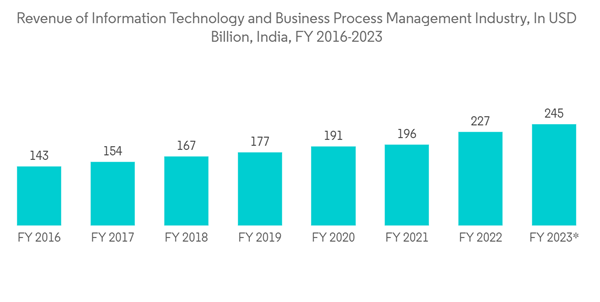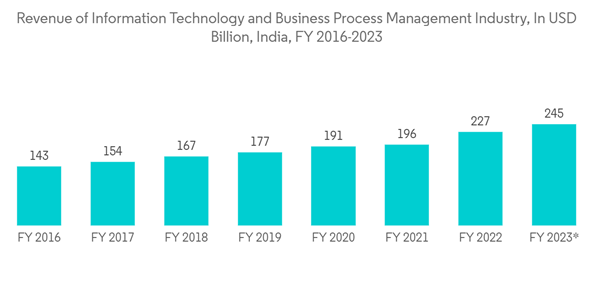Next Generation Memory Market Projected to Reach USD 24.76 Billion by 2029

Next Generation Memory Market Revenue Of Information Technology And

Dublin, March 26, 2024 (GLOBE NEWSWIRE) -- The "Next Generation Memory - Market Share Analysis, Industry Trends & Statistics, Growth Forecasts 2019 - 2029" report has been added to ResearchAndMarkets.com's offering.
The Next Generation Memory Market size is estimated at USD 6.96 billion in 2024, and is expected to reach USD 24.76 billion by 2029, growing at a CAGR of 28.90% during the forecast period (2024-2029).

Key Highlights
Emerging technologies like artificial intelligence (AI), machine learning (ML), the Internet of Things (IoT), big data, etc., have a growing need for memory devices with high bandwidth, high scalability, and low power consumption. This, along with the growing need for enterprise storage, is one of the most important things driving the growth of the studied market.
The rapid growth of data has increased the need for better memory and storage in the workplace. Older memory systems have been unable to keep up with the growing amount of data, the need for more bandwidth, and the speed of newer systems.
With the demand for universal memory devices increasing, most of the new memory technologies aim to become universal memory devices to replace one of the members of the hierarchy with better technology. The high-end laptops use solid-state flash chips instead of huge mechanical hard disks and use the cloud for backup rather than tape drives. Recently, Intel announced Optane, which uses 3D XPoint technology and is close to universal memory. This is primarily a flash drive with non-volatile memory fast enough to function as RAM.
The emerging non-volatile memory technologies, such as MRAM, STT-RAM, FRAM, phase-change memory (PCM), and ReRAM, combine the speed of SRAM, the density of DRAM, and the non-volatility of flash memory. Hence, these are possible additions to future memory technologies. Furthermore, implementing next-generation infotainment systems and ADAS would combine DRAM memory technologies with significantly higher performance and low power consumption capabilities.
Furthermore, the increasing demand for enterprise storage applications is driving the market. The end-user industries, such as BFSI, invest heavily in IoT technologies and reap significant financial rewards. For instance, embedded MRAM is a promising technology for applications such as IoT. Also, other next-generation memories, such as 3D Xpoint, offer multiple times faster transfer speeds than the current SSDs.
Considering the growing demand, vendors operating in the market continuously focus on launching new products to target emerging application areas. For instance, recently, Samsung Electronics announced the launch of their next generation of memory chips that promise to double the speed and offer the most extensive capacity yet. The company introduced these next-generation chips to target the growing demand across data centers and artificial intelligence applications.
However, the lack of stability under extreme environmental conditions is restricting the market. Despite recent technological advancements, these memory devices are significantly impacted by harsh environmental conditions in terms of durability and reliability. For instance, the more thermal stress a memory device is exposed to, the greater the risk of damaging it, which challenges a market to grow.
The global outbreak of COVID-19 had a notable impact on the growth of the studied market. However, in post pandemic scenario, the supply chain disruption improved, growth in investment in new IT infrastructures, growth in the adoption of digital technologies which positively impacted demand, such factors are expected to create growth opportunities for the studied market.
Information Technology Application will Have Significant Share in the Market
With the growing size of enterprises, many IT firms have embraced enterprise storage technologies. Such adoption has driven the demand for next-generation storage to handle organizations' computing power. According to the IBEF, India's IT and BPM industries are expected to grow from USD 6.96 billion in H1 2021 to USD 19.93 billion in 2025.
Also, according to NASSCOM India and MeitY India, The total revenue generated by the IT and BPM industry in India reached a significant amount of USD 227 billion in 2022 and is likely to reach USD 245 billion in 2023. The general upward trend observed during this period can primarily be attributed to the substantial influx of outsourcing from foreign companies.
While many client devices use solid-state storage technologies nowadays, hundreds of millions still use hard disk drives (HDDs) across virtually all data centers worldwide. With the help of heat-assisted magnetic recording (HAMR) technology, HDDs should be able to store a lot more data in the coming years.
Though HDD media is still a top seller in the storage industry, the adoption of flash and SSDs has risen fast over the last several years. Because of the rapid growth of data, significant media investments are being made in this sector. Vendors regularly launch new products to keep this technology relevant and ready for emerging applications. For instance, in October 2022, Western Digital, a leading provider of memory technologies, expanded its NVMe SSD portfolio by launching a new SSD drive. This new SSD targets the hardcore gaming segment.
Furthermore, the growing demand for data centers to support the storage needs of the IT industry is creating growth opportunities for the market under consideration. Even though North America has the most data centers, investments in data centers are also being driven by growing demand in other places. This is creating growth opportunities in other places as well.
North America to Account for a Major Share
The region is shifting from individual devices and system storage to the core cloud and network edge. According to a survey by Intel Security, the number of companies adopting hybrid cloud services alone has risen by three times the previous level. Cloud providers have been making the cloud more secure and giving organizations better, more reliable systems, which can be very helpful.
A selection of companies mentioned in this report includes
Intel Corporation
Toshiba Corporation
Fujitsu Ltd
Honeywell International Inc.
Micron Technologies Inc.
IBM Corporation
Sony Corporation
Samsung Electronics Co. Ltd
Crossbar Inc.
Cypress Semiconductor Corporation
Avalanche Technologies Inc.
Adesto Technologies
Everspin Technologies Inc.
SK Hynix Inc.
Taiwan Semiconductor Manufacturing Company Limited (TSMC)
For more information about this report visit https://www.researchandmarkets.com/r/89l272
About ResearchAndMarkets.com
ResearchAndMarkets.com is the world's leading source for international market research reports and market data. We provide you with the latest data on international and regional markets, key industries, the top companies, new products and the latest trends.
Attachment
CONTACT: CONTACT: ResearchAndMarkets.com Laura Wood,Senior Press Manager press@researchandmarkets.com For E.S.T Office Hours Call 1-917-300-0470 For U.S./ CAN Toll Free Call 1-800-526-8630 For GMT Office Hours Call +353-1-416-8900


 Yahoo Finance
Yahoo Finance 
